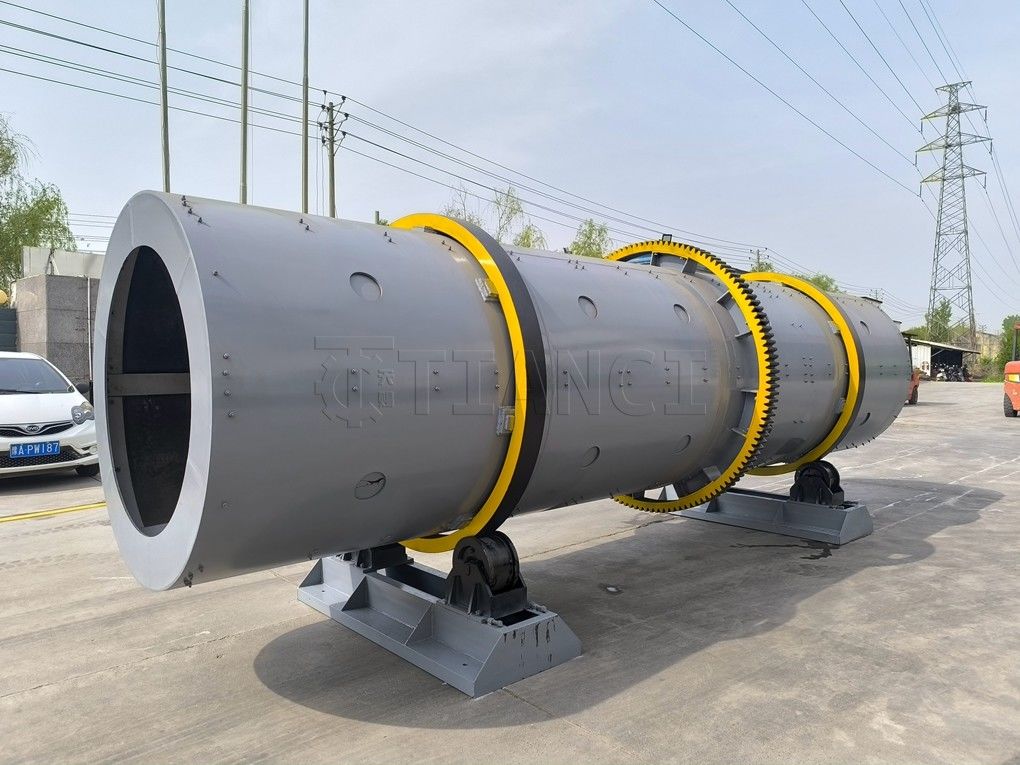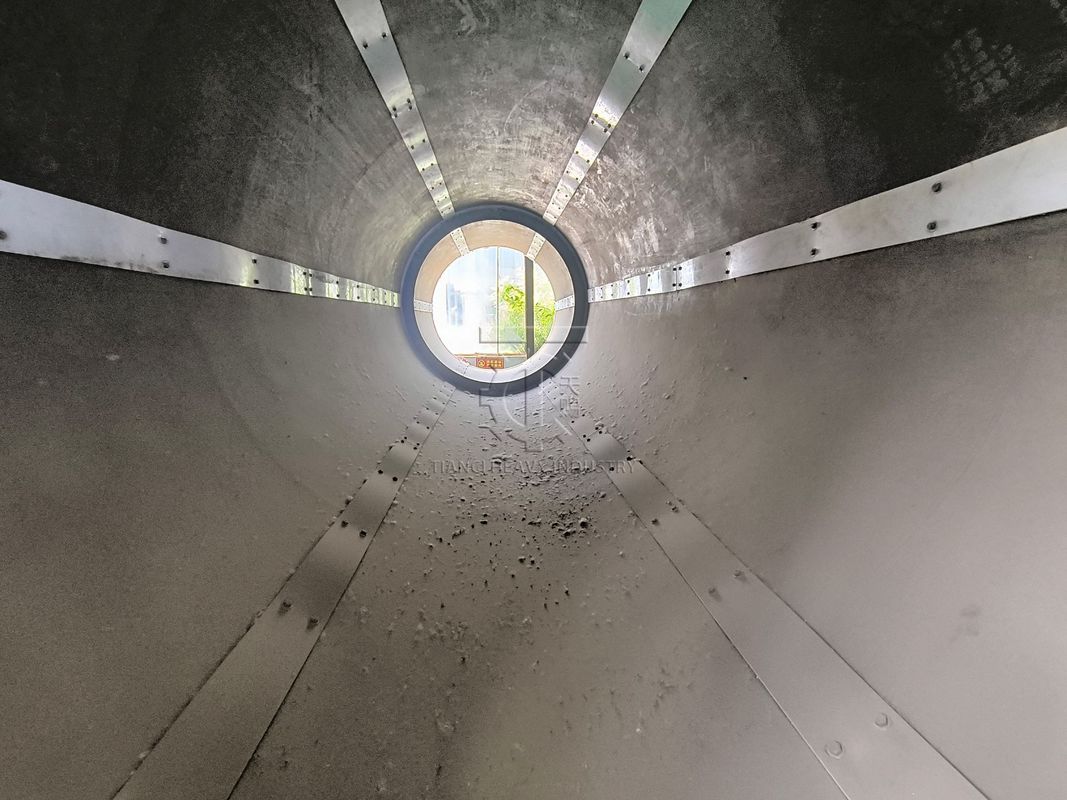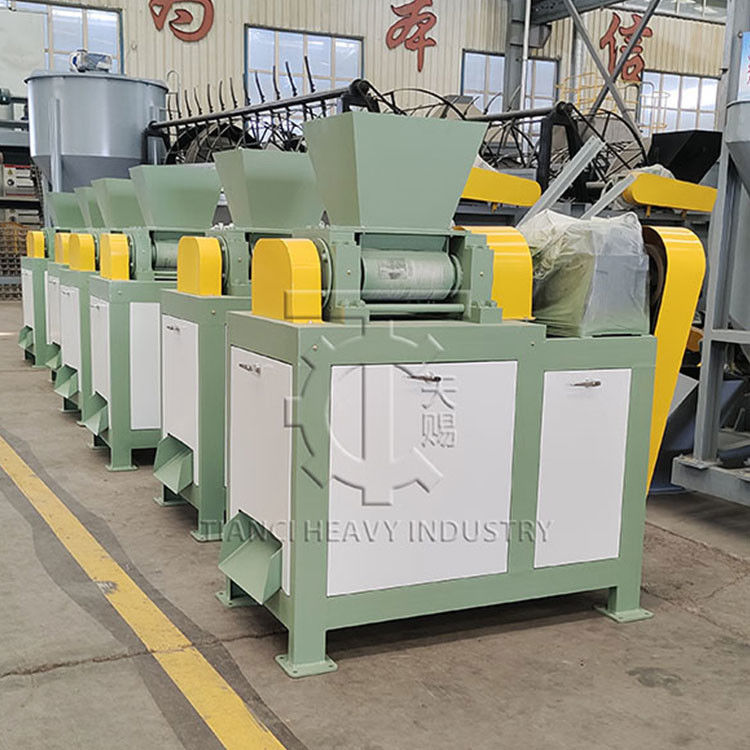I. Core Positioning and Capacity Matching of Production Line
1. Core Objectives
Using a rotary drum granulator as the core equipment of the bentonite granule production line , the raw bentonite ore powder is processed into spherical granules with a particle size of 2-6mm, a moisture content of ≤3%, and a compressive strength of ≥15N/particle. This meets the demand for molded bentonite in the building materials, metallurgy, and environmental protection industries, achieving an annual output of 100,000 tons of qualified finished products (based on an annual operating time of 300 days, with an average daily capacity of approximately 333 tons and an hourly capacity of approximately 14 tons).
2. Raw material requirements
• Bentonite raw ore powder: more than 90% of the particles must pass through a 200-mesh sieve, and the moisture content must be controlled between 8% and 12% (if the moisture content of the raw ore is too high, a pre-drying process is required).
• Binder: Water is preferred (low cost, no impurities introduced). For special needs, 0.5%-1% sodium carboxymethyl cellulose can be added (to improve particle strength).
• Auxiliary materials: No other impurities are allowed. The purity of the raw ore powder must be ≥95% to avoid affecting the quality of the finished product.

II. Overall Configuration and Process Flow of the Production Line
1. List of core equipment configurations (in process order)
|
Process
|
Equipment Name
|
Model/Specifications
|
quantity
|
core role
|
|
Raw material storage
|
Raw ore powder silo
|
50m³ capacity, with vibrating feeding device
|
2 units
|
Store bentonite ore powder to ensure continuous supply.
|
|
Raw material conveying
|
screw conveyor
|
Conveying capacity 20m³/h, material 304 stainless steel
|
3 units
|
Connect the various devices to achieve closed material conveying.
|
|
Crushing and removing impurities
|
Impact crusher
|
Processing capacity: 20 tons/hour; fineness adjustable (200 mesh).
|
1 unit
|
Crushing lumps in the raw ore and removing stones and metal impurities.
|
|
Ingredient Mixing
|
Twin-shaft paddle mixer
|
Effective volume 5m³, mixing time 3-5min/batch
|
1 unit
|
Mix raw ore powder with water (binder), and control humidity.
|
|
Core granulation
|
Rotary drum granulator
|
Diameter 2.2m, length 6m, tilt angle 3°-5°, rotation speed 12-15r/min
|
1 unit
|
Achieve material agglomeration and form particles of the target size.
|
|
Granule drying
|
Rotary drying kiln
|
Diameter 2.4m, length 18m, hot air temperature 200-250℃
|
1 unit
|
Reduce particle moisture content to ≤3% to improve strength
|
|
Cooling
|
Cooling roller
|
2.0m in diameter, 10m in length, air-cooled + spray-cooled
|
1 unit
|
The temperature of the dried particles was reduced from 80℃ to room temperature.
|
|
Screening and grading
|
Double-layer vibrating screen
|
Screen mesh size: 2mm (lower layer), 6mm (upper layer)
|
1 unit
|
Separate qualified granules, returned powder, and oversized lumps.
|
|
Finished product storage
|
Finished Goods Warehouse
|
80m³ capacity, equipped with automatic metering and discharging device
|
2 units
|
Storing qualified finished products facilitates subsequent packaging and transportation.
|
|
Environmental protection facilities
|
Baghouse dust collector
|
Handles an air volume of 20,000 m³/h, with a dust removal efficiency of ≥99.5%.
|
2 units
|
Dust generated during the crushing and drying processes is collected and discharged in compliance with standards.
|
2. Detailed Process Flow (6 Core Steps)
(1) Raw material pretreatment: Ensure that the materials meet the standards
• The raw ore powder is fed from the silo into the impact crusher via a screw conveyor and crushed to a fineness of 200 mesh. At the same time, the built-in magnetic separator removes metal impurities and the sieve removes stones (particle size > 5mm).
• After pretreatment, the mineral powder is temporarily stored in a transfer silo, and the feed rate is controlled by a quantitative feeder (14 tons/h, matching the hourly capacity) to avoid overloading in subsequent stages.
(2) Ingredient mixing: Controlling humidity is key
• A measured amount of mineral powder and water are simultaneously fed into a twin-shaft paddle mixer in a proportion (water addition amount 15%-18%) and stirred for 3-5 minutes;
• Judgment of mixing endpoint: The material is in a state where it can be "formed into a ball when squeezed in the hand and does not break apart when lightly pinched" (moisture content 18%-22%). At this time, the material has moderate viscosity and is most easy to granulate.
(3) Rotary drum granulation: Core parameters determine particle quality
• After mixing, the materials are continuously fed into the rotary drum granulator. Through the "rolling + extrusion" action generated by the rotation of the drum, the materials gradually agglomerate into granules.
• Key parameter control: ① Drum tilt angle 3.5° (to ensure material residence time of 8-10 minutes, allowing particles to grow fully); ② Rotation speed 13 r/min (to avoid excessively fast rotation speed leading to excessively small particles, or excessively slow rotation speed leading to agglomeration); ③ Feed rate stabilized at 14 tons/h (to prevent fluctuations in feed rate from causing uneven particle size).
• After granulation, the wet particles have a particle size of 2-6 mm and a moisture content of about 20%.
(4) Drying and cooling: to ensure the strength and safety of the finished product
• The wet particles enter a rotary drying kiln, which is heated by natural gas or a hot air furnace (hot air temperature 220℃). The drying time is about 25 minutes, reducing the moisture content to ≤3%.
• After drying, the granules (temperature approximately 80℃) enter the cooling drum, where they are cooled by a combination of air cooling and spraying (water temperature 25℃). Within 15 minutes, the temperature is reduced to ≤35℃ to prevent the granules from absorbing moisture or clumping due to high temperatures.
(5) Screening and return: improve raw material utilization rate
• After cooling, the particles enter a double-layer vibrating screen. The upper screen (6mm) separates oversized lumps (approximately 3%), which are then sent to a pulverizer for re-pulverization. The lower screen (2mm) separates fine powder (approximately 5%), which is then returned to the mixer for re-granulation.
• The middle layer (2-6mm) is a qualified finished product, which is sent to the finished product warehouse by a conveyor. The total utilization rate of raw materials can reach more than 95%.
(6) Environmental protection: Achieving clean production
• Dust generated during the crushing process is collected through pipelines to a bag filter, and the collected fine powder is returned to the mixer. The hot air (containing a small amount of dust) generated by the drying kiln is subjected to secondary dust removal, and the exhaust gas temperature is reduced to below 80℃, with a dust concentration of ≤30mg/m³, which meets the national emission standards.
Advantages of the production line
1. Core advantages of the production line
• High capacity matching : A single line can achieve an annual output of 100,000 tons, with a stable equipment load rate of 85%-90%, without the need for multiple lines to be connected in parallel;
• Stable finished product quality : qualified particles have a particle size uniformity of ≥90%, compressive strength of ≥15N/particle, and moisture content of ≤3%, meeting the stringent requirements of downstream industries for molded bentonite;
• Low operating costs : Using water as the main binder reduces raw material costs by more than 60%; the return material system increases raw material utilization to 95%, saving approximately 800,000 yuan in raw material costs annually.
• Environmental compliance : The entire process is a closed conveyor system with high-efficiency dust removal, with no dust spillage. The exhaust emissions comply with GB 16297-1996 "Integrated Emission Standard for Air Pollutants".
Rotary Drum Granulator Frequently Asked Questions (FAQs)
Q: Could you please specify the hourly output range of your drum granulator?
A: The standard hourly output of our drum granulator ranges from 1 to 300 tons. If you have higher output demands (e.g., over 25 tons per hour), we can tailor a customized solution based on your specific production needs.
Q: HOW DOES A ROTARY DRUM GRANULATOR WORK?
A: A drum granulator works by tumbling material in the presence of a liquid binder to encourage granule formation and growth. Feed material and binder are constantly fed through the rotating drum. The rolling action, combined with the stickiness from the binder, causes fines to collect together into particles. These particles continue to pick up additional fines and binder as they tumble in the bed, causing them to densify and pick up additional layers in a phenomenon known as coalescence. Tumbling flights can be incorporated into the unit to increase agitation of the material bed.
This way of forming agglomerates is a type of agitation agglomeration also known as wet granulation, balling, or pelletizing.
Q: WHAT TYPES OF MATERIALS CAN A ROTARY DRUM GRANULATOR PROCESS?
A: Generally speaking, drum granulators can process any bulk solid in the form of a dry, fine powder. This flexibility lends well to a host of industries, processing materials ranging from specialty chemicals and fertilizers, to minerals and ores, and everything in between.
In some cases, the feedstock may require pretreatment in the form of crushing, grinding, or drying to be a suitable feed for the granulator and produce the characteristics desired in the end product.
Q: WHAT’S THE ADVANTAGE OF A ROTARY DRUM GRANULATOR OVER A DISC PELLETIZER?
A: In choosing between a drum granulator and a disc pelletizer, the drum is often chosen because it offers a higher throughput than the disc pelletizer. The rotary drum also has the advantage of being a “closed” system, meaning that granulation occurs inside a contained environment, so fugitive material is limited.
WHAT CAPACITIES CAN A GRANULATION DRUM ACCOMMODATE?
A: Granulation drums can be customized to nearly any size, accommodating capacities ranging from 500 lb/hr – 3500 TPH+.
ARE DRUM GRANULATORS BATCH OR CONTINUOUS?
A: Rotary drum granulators are typically employed in a continuous setting, though they may function as a batch device in some R&D environments, such as the TIANCI Innovation Center.
Q: WHAT IS THE RETENTION TIME OF A ROTARY DRUM GRANULATOR?
A: Retention time is one process parameter used to control the characteristics and quality of the material exiting the drum, so it can vary significantly depending on the process and product goals. In general, retention time in a granulator may fall anywhere between 30 seconds and 60 minutes.
Q: WHAT ARE THE TYPICAL WEAR ITEMS?
A: Rotary drum granulators are generally low maintenance, but some items can become worn, depending on the operating conditions, and particularly if the drum falls out of alignment. The most common wear items for a drum granulator typically include the liner (where applicable), tumbling flights (where applicable), and potentially trunnion wheels, tires, and thrust rollers.
Rotary drum alignment is an important aspect of drum maintenance to prevent wear of the tires and trunnion wheels. When a drum falls out of alignment, it puts added stress on all components, encouraging undue wear.
Q: DOES THE PRODUCT EXITING THE GRANULATOR REQUIRE DRYING?
A: Since the granulation process relies on a liquid binder to form and layer granules, the product exiting the granulator is wet and must be dried unless it is moving immediately to a downstream process that does not require drying (such as in the case of iron ore balling, where pellets go to a grate kiln).
Drying is typically carried out in a rotary dryer, which further rounds and “polishes” the granules as a result of the tumbling action that occurs as the drum rotates.
Q: HOW DO I KNOW IF A ROTARY DRUM GRANULATOR IS RIGHT FOR MY APPLICATION?
A: Whether or not a rotary drum granulator is the right fit for a given project depends on specific process and product goals, such as capacity, level of control over particle characteristics, product parameters, and more.
When it is not clear if a drum granulator will be able to meet the project objectives, testing can be carried out in the TIANCI Innovation Center to evaluate the process and identify the most suitable equipment configuration.
Q: IS ANY OTHER EQUIPMENT REQUIRED TO SUPPORT A ROTARY DRUM GRANULATOR?
A: Drum granulators require a feeding and offtake system to convey material into and away from the drum. They also typically require screens and a recycle circuit to recover overs and unders and recycle them back into the process
Drum granulators are also typically followed by a rotary dryer and in some cases, may be preceded by a mixer for providing a homogeneous feedstock to the unit.
Q: WHAT DOES THE DESIGN PROCESS LOOK LIKE?
A: Rotary drum granulator design typically begins with testing to assess the feasibility of granulating the intended material and to gather key process data such as percent fill, retention time, drum speed and slope, spray system design, and more.
Once the data has been gathered, engineers work off of this to size the drum and incorporate any necessary features or modifications needed to produce the desired product at the intended capacity.
Q: WHAT DATA IS NEEDED TO DESIGN A ROTARY DRUM GRANULATOR?
A: A variety of data points are necessary to design the granulator. Along with a process description, the follow data is typically required:
Why Choose Us?

Support and Services:
We are committed to providing our customers with comprehensive support and reliable services. Our company offers free process design drawings tailored to your needs, as well as free trial testing services to ensure optimal machine performance. Every machine comes with a one-year warranty for worry-free operation. In addition, we provide free installation and professional training services, helping your team quickly master the equipment and achieve efficient production.



 Your message must be between 20-3,000 characters!
Your message must be between 20-3,000 characters! Please check your E-mail!
Please check your E-mail!  Your message must be between 20-3,000 characters!
Your message must be between 20-3,000 characters! Please check your E-mail!
Please check your E-mail! 





